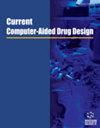番木瓜抗乳腺癌强效生物活性化合物的计算机方法及分子对接研究。
IF 1.6
4区 医学
Q4 CHEMISTRY, MEDICINAL
引用次数: 1
摘要
背景:乳腺癌是全球最大的难题之一,目前的治疗选择是使用部分激动剂/拮抗剂靶向激素受体。雌激素和芳香化酶在乳腺癌中起重要作用。雌激素的过度活动或低水平产生会导致各种激素问题,尤其是乳腺癌。有效的乳腺癌药物有他莫昔芬、紫杉醇、环磷酰胺、曲妥珠单抗等,芳香酶抑制剂如阿那曲唑、来曲唑、依西美坦等。一般来说,乳腺癌药物会对人体产生一些严重的副作用。目的:本研究旨在从番木瓜中寻找副作用较小的乳腺癌治疗替代药物。方法利用计算方法对番木瓜中生物活性化合物的性质进行预测,并利用Schrödinger suite (Maestro 9.5)软件确定其与靶点的结合亲和力。配体和靶蛋白均从知名数据库中获得。从番木瓜中鉴定出35种生物活性化合物,利用ChemDraw软件绘制并进行配体制备向导。QikProp用于吸收、分布、代谢和排泄(ADME)分析。结果在对接研究中,绿原酸、杨梅素、槲皮素、异鼠李素、儿茶素等植物化合物的Glide评分最高。在5种植物活性化合物中,绿原酸与标准化合物他莫昔芬、阿那曲唑和来曲唑相比,具有较好的结合能,Gscore更有趣。结论:番木瓜植物化合物具有抗雌激素或芳香酶抑制剂的作用,可调节雌激素水平,对绝经后妇女具有降低乳腺癌风险的作用。因此,我们推荐这5种生物活性最高的植物化合物,通过体外和体内研究进行进一步的研究。本文章由计算机程序翻译,如有差异,请以英文原文为准。
In silico approach and molecular docking studies of potent bioactive compounds of Carica papaya as anti-breast cancer agents.
BACKGROUND
Breast cancer is one of the greatest global dilemmas and the current treatment option is using partial agonists/antagonists to target hormone receptors. Estrogen and aromatase enzymes play important roles in breast cancer. The excessive activity or low-level production of estrogen causes various hormonal problems, particularly breast cancer. Potent breast cancer drugs are Tamoxifen, Paclitaxel, Cyclophosphamide, Trastuzumab, etc., and aromatase inhibitors such as Anastrozole, Letrozole and Exemestane, etc. Generally, Breast cancer drugs initiate a few serious side effects in humans.
OBJECTIVES
This study has attempted to identify alternative drug candidates from Carica papaya with fewer side effects for the treatment of breast cancer.
METHODS
To achieve this, we have utilized the computational methods for predicting the properties of bioactive compounds from Carica papaya and determining the target binding affinities using the Schrödinger suite (Maestro 9.5). The ligands and target protein were obtained from the well-known database. There are 35 bioactive compounds identified from Carica papaya, were drawn using ChemDraw software and performed Ligand preparation wizard. QikProp is used for Absorption, Distribution, Metabolism, and Excretion (ADME) analysis.
RESULTS
From the docking studies, the phytocompounds such as Chlorogenic acid, Myricetin, Quercetin, Isorhamnetin, Catechin showed the highest Glide scores. Among the five bioactive phytocompounds, Chlorogenic acid shows a more interesting Gscore with good binding energy compared with the standards Tamoxifen, Anastrozole, and Letrozole. ADME profiling of the phytocompounds was investigated to find the pharmacokinetic characteristics and drug-likeness Conclusion: Carica papaya derived phytocompounds act as an antiestrogen or aromatase inhibitor to regulate the levels of estrogen and the implications for postmenopausal women and reduce the risk of breast cancer. Therefore, we propose these top five bioactive phytocompound for further investigation through in vitro and in vivo studies.
求助全文
通过发布文献求助,成功后即可免费获取论文全文。
去求助
来源期刊

Current computer-aided drug design
医学-计算机:跨学科应用
CiteScore
3.70
自引率
5.90%
发文量
46
审稿时长
>12 weeks
期刊介绍:
Aims & Scope
Current Computer-Aided Drug Design aims to publish all the latest developments in drug design based on computational techniques. The field of computer-aided drug design has had extensive impact in the area of drug design.
Current Computer-Aided Drug Design is an essential journal for all medicinal chemists who wish to be kept informed and up-to-date with all the latest and important developments in computer-aided methodologies and their applications in drug discovery. Each issue contains a series of timely, in-depth reviews, original research articles and letter articles written by leaders in the field, covering a range of computational techniques for drug design, screening, ADME studies, theoretical chemistry; computational chemistry; computer and molecular graphics; molecular modeling; protein engineering; drug design; expert systems; general structure-property relationships; molecular dynamics; chemical database development and usage etc., providing excellent rationales for drug development.
 求助内容:
求助内容: 应助结果提醒方式:
应助结果提醒方式:


